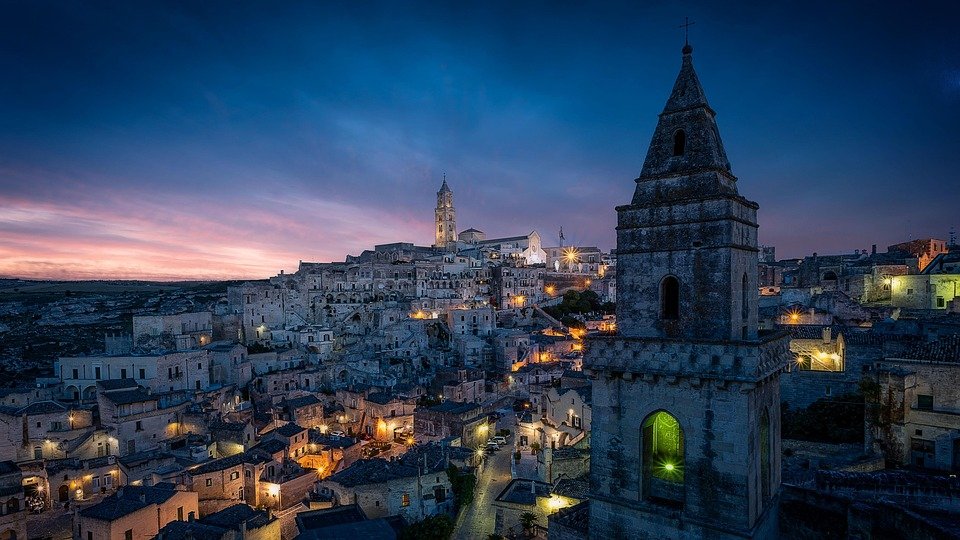Wondering when to go to Matera without running into huge crowds or bad weather? You're not alone! Matera, with its unique cave dwellings and stunning scenery, is a dream destination but knowing the best time to visit can significantly enhance your experience. The ideal timing really depends on several factors—like the weather, your budget, local events, and what you want to do while you're there. Let's dive into the ins and outs of planning your trip to Matera!
Overview of Matera’s Climate
Matera enjoys a Mediterranean climate, characterized by hot, dry summers and mild, wet winters. The weather in Matera can be quite varied, so it's helpful to know what to expect throughout the year. Average summer temperatures can soar into the high 30s°C (over 95°F), while winter sees milder conditions, averaging around 5-10°C (41-50°F).
The dry season typically runs from May to September, while late fall and early spring are considered the wettest months. Understanding these temperature trends in Matera can help you choose the perfect time for your adventure.
Month-by-Month Breakdown
January – March (Winter)
Weather: Chilly and wet, with temperatures ranging from 5-10°C. Expect rainy days, especially in February.
Events: Carnival celebrations in February—colorful parades and local festivities.
Pros/Cons: While hotels may be cheaper, and you'll avoid the tourist crowds, the chill and rain can dampen outdoor explorations.
Who It's Best For: History buffs who want a quiet experience and are keen on local culture.
April – May (Spring)
Weather: A lovely transition with rising temperatures (10-25°C). April can still be rainy, but May usually brings clearer skies.
Events: Easter celebrations are significant here; it's a great time to witness processions and traditional events.
Pros/Cons: The blooming scenery makes for stunning photos, but Easter crowds can make trips to popular sites busier than usual.
Who It's Best For: Photographers and culture enthusiasts looking for vibrant colors and local traditions.
June – August (Summer)
Weather: Hot and dry, with temperatures regularly above 30°C. Don't forget your sunscreen!
Events: Various local festivals and cultural events. The atmosphere is lively!
Pros/Cons: This is peak tourist season; it's bustling and vibrant, but prices for accommodations skyrocket.
Who It's Best For: Those who thrive in warmer weather and want to immerse themselves in lively, local culture.
September – October (Autumn)
Weather: Generally warm but less intense than the summer months, temperatures drop to a pleasant 20-25°C.
Events: The "Sagra del Rame" (Copper Festival) in mid-October showcases local crafts.
Pros/Cons: The crowds thin out, making sightseeing more pleasant, but some attractions may start to close for the season.
Who It's Best For: Budget travelers and those who prefer to explore without the hustle and bustle.
November – December (Late Autumn to Early Winter)
Weather: Cooler temperatures (around 5-15°C) with increased chances of rain.
Events: The beginning of Christmas markets and festive events in December.
Pros/Cons: Low accommodation rates, but the weather is quite chilly. You might miss out on some outdoor tours.
Who It's Best For: Travelers looking for a quieter experience with some festive spirit.
Tips Based on Travel Style
For Budget Travel
If you're trying to pinch your pennies, late autumn (November) and winter (January – early March) are excellent. Accommodation is cheaper, and local attractions are less crowded.
For Avoiding Crowds
Spring (April – June) and fall (September – October) are your best bets—enough warmth and beauty without overwhelming crowds.
For Outdoor Activities
June – August boasts warm temperatures perfect for hiking, exploring the Sassi cave dwellings, or other outdoor adventures. Just be prepared for the heat!
For Cultural Events
If you're keen on local festivals, aim for late winter (February) for Carnival or spring (April – May) for Easter festivities. Matera's vibrant culture shines during these periods!
For Romantic or Solo Trips
Consider visiting in the shoulder seasons of spring or fall. The quietness and beautiful sunsets create a romantic backdrop; perfect for solo reflection or intimate moments.
It really depends on what kind of experience you're looking for in Matera. Some travelers love April for its quieter vibe, blooming flowers, and just-beginning warmth, while others aim for the lively atmosphere of summer festivals in July.
FAQs
Is January a good time to visit Matera?
Yes, for those who seek fewer crowds and enjoy local culture—but be prepared for chilly, wet conditions.
When is the rainy season in Matera?
Typically from November to March, with the most rain expected in December and February.
What's the cheapest time to visit Matera?
Late autumn through winter (November to February) usually offers the best prices for accommodation and flights.
What's the peak season in Matera?
Summer months (June to August) see the highest tourist levels, alongside increased prices.
So there you have it! Whether you're after cultural festivities, beautiful weather, or a quiet escape, the ideal time to go to Matera will align with your travel preferences. The enchanting backdrop of historic caves and stunning landscapes awaits you anytime—just know what you're getting into! Happy travels!








